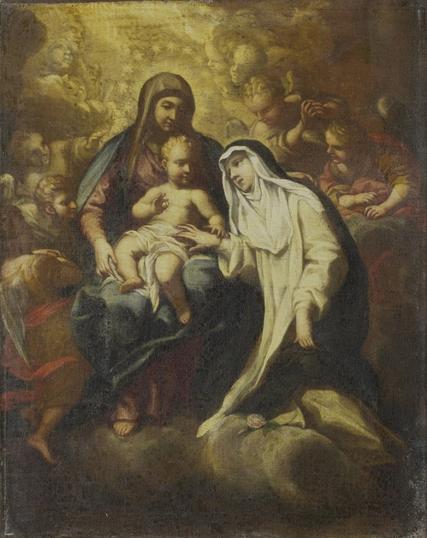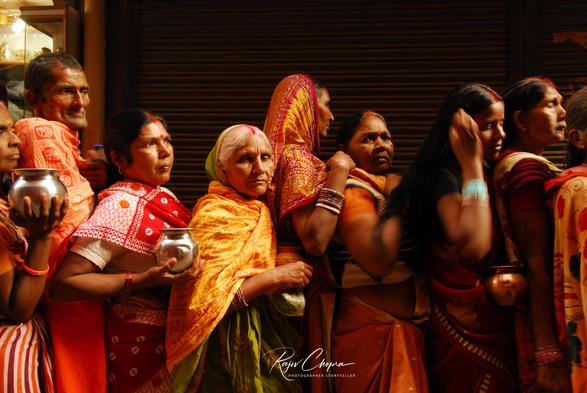St. Rose of Lima
She was born Isabel Flores de Oliva (April 20, 1586-August 24, 1617). She was a member of the Third Order of St. Dominic in Lima, Peru, Spanish Empire. She was known for her life of severe penance & her care of the poor of the city through her own private efforts.
Rose of Lima was born to a noble family & is the patroness saint of embroidery, gardening, cultivation of blooming flowers, florists, embroiderers, sewing lace, gardeners, people ridiculed or misunderstood for their piety, the resolution of family quarrels, against vanity, & the indigenous peoples of the Americas. She was the 1st person born in the Americas to be canonized as a saint.
As a saint, Rose of Lima has been designated as a co-patroness of the Philippines, along with Pudentiana. Both saints were moved to Second-class patronage in September 1942 by Pope Pius XII. But Rose remains the main patroness of Peru & the local people of Latin America. Her image was formerly featured on the highest denomination banknote of Peru.
Her nickname “Rose” comes from a story in her infancy: a servant claimed to have seen her face change into a rose. In 1597, Isabel was confirmed by the Archbishop of Lima, Toribio de Mogrovejo, who was also declared a saint. She then formally changed her name to Rose (Rosa in Spanish) at that time.
When she was a young girl, she copied Catherine of Siena. She started praying 3x a week & performed severe penances in secret. She was admired for her beauty. She cut off her hair & rubbed peppers on her face, to distract from her beauty. She was upset that men were starting to notice her, & not for her spirituality. She turned away all of her suitors. Her family wasn’t having any of that.
Much to her parents’ chigrin, Rose spent a LOT of time thinking about the Blessed Sacrament, which she received daily. This is rare, & odd, for the time. She wanted to take a vow of virginity. But her parents didn’t want that! Out of frustration, her dad gave her a room to herself at the family home.
In addition to fasting, she permanently abstained from eating meat. She helped the sick & hungry around her community. She would bring them to the room, her dad built, to take care of the sick. To help her family financially, Rose would sell fine needlework she made. She would also take flowers to the market to sell as well.
To help the poor, she would make & sell lace & embroidery. This was in addition to all the prayer & she did penance in a small grotto she’d built. She was otherwise a recluse. She only left her room to go to church.
She attracted the attention of the friars of the Dominican Order. She wanted to become a nun. But her dad wasn’t hearing any of that noise. So instead, she entered the Third Order of St. Dominic, while she was living in her parents’ home.
When she was 20, she started wearing the habit of a tertiary & took a vow of perpetual virginity. A tertiary is a lay member of a religious order’s Third Order, who lives in the secular (worldly) world while they strive for Christian perfection by following the spiritual way of life associated with that particular order. The First Order is the clergy, the Second Order is the religious women in the community (official nuns).
She allowed herself only 2 hours a night of sleep, at most, so she could have more time to devote to prayer. She also wore a heavy metal crown made of silver, that had small spikes on the inside. This was to imitate the Crown of Thorns worn by Jesus.
For 11 years, she lived like this. Throughout this time, there would be periods of ecstasy. She passed away on August 24, 1617, at the age of 31. She had been battling a long illness. It’s said that she prophesied her death date.
Her funeral was held in the cathedral. It was attended by all the public authorities of Lima. August 23 is her feast day. It’s August 30th in the Traditional calendar.
Rose was beatified by Pope Clement IX on May 10, 1667. She was canonized on April 12, 1671 by Pope Clement I. She was the first Catholic in the Americas to be officially declared a saint.
Her shine is inside of the convent of St. Dominic in Lima. The Catholic Church says that many miracles happened after her death: she cured a leper; & at the time of her death, the city of Lima smelled like roses; roses started falling from the sky.
Rose’s skull, surmounted with a crown of roses, is on public display at the Basilica in Lima, Peru.
One-Time Monthly YearlyMake a one-time donation
Make a monthly donation
Make a yearly donation
Choose an amount
$1.00 $5.00 $10.00 $1.00 $5.00 $10.00 $5.00 $10.00 $15.00Or enter a custom amount
$Your contribution is appreciated.
Your contribution is appreciated.
Your contribution is appreciated.
DonateDonate monthlyDonate yearly
#10May1667 #12April1671 #1597 #20April1586 #24August1617 #Americas #ArchbishopOfLima #August23 #August30 #Basilica #Beatified #BlessedSacrament #Canonized #Cathedral #CatherineOfSiena #Convent #CrownOfThorns #CultivationOfBloomingFlowers #DominicanOrder #Embroidery #Embroilerers #fasting #FeastDay #FineNeedlework #Florists #Gardeners #Gardening #IndigenousPeoples #IsabelFloresDeOliva #Lace #LatinAmerica #Leper #Lima #Miracles #Nun #PerpetualVirginity #Peru #Philippines #Piety #PopeClementIX #PopeClementX #PopePiusXII #Pudentiana #Recluse #ReligiousEcstasy #Rosa #Roses #Saint #September1942 #SewingLace #Shrine #Skull #Spanish #SpanishEmpire #StDominic #StRoseOfLima #Tertiary #ThirdOrderOfStDominic #ToribioDeMogrovejo #TraditionalCalender #Vanity #VowOfVirginity





